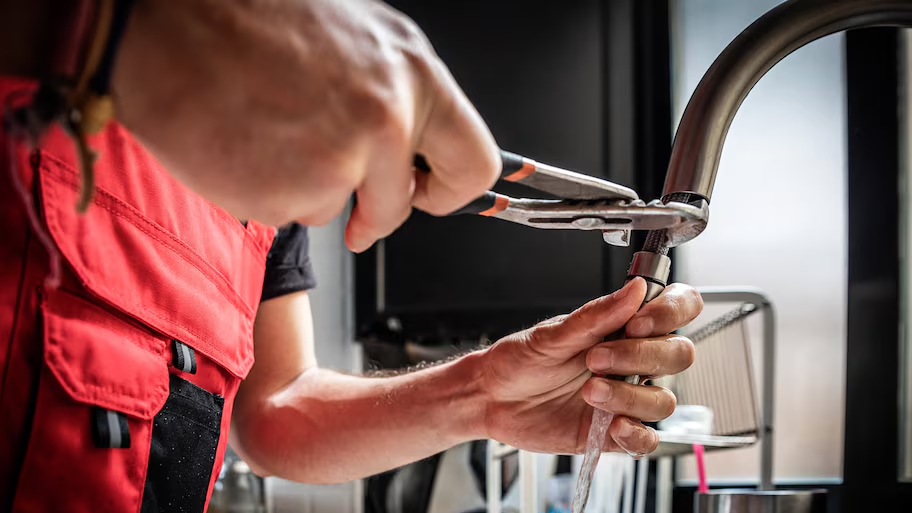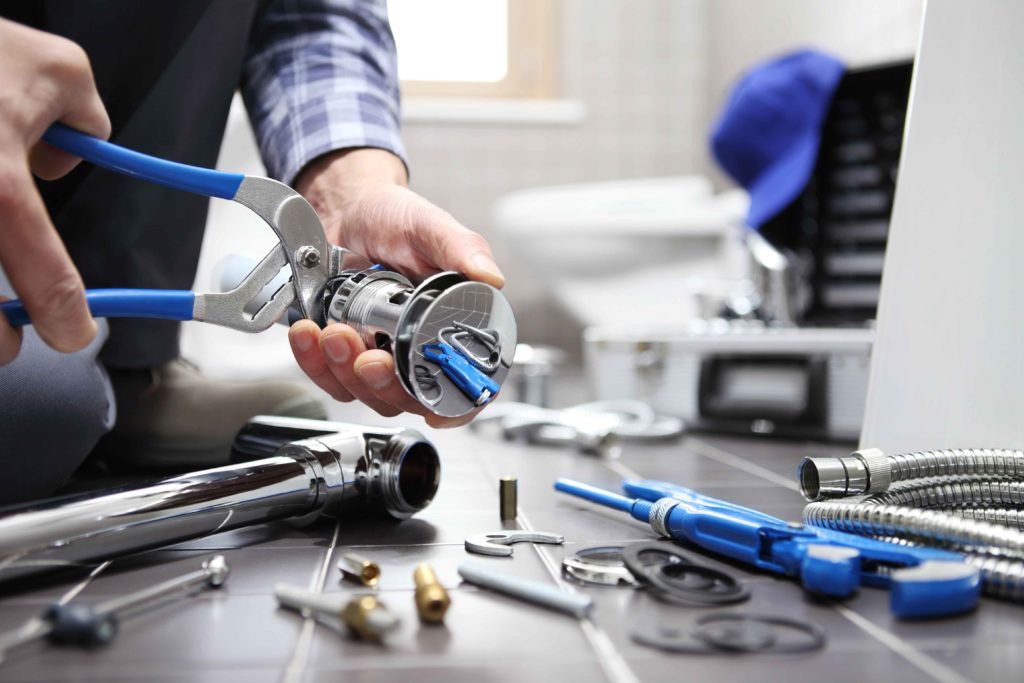Exploring the Value of Fixing a Dripping Faucet
Exploring the Value of Fixing a Dripping Faucet
Blog Article
We've stumbled on this article on Leaky Faucets: Why They Happen & What to Do About Them below on the net and reckoned it made good sense to discuss it with you on this page.

Trickling faucets might look like a minor hassle, but their impact goes beyond simply the aggravation of the audio. From drainage to incurring unnecessary monetary expenses and health and wellness risks, disregarding a dripping tap can bring about different repercussions. In this article, we'll look into why it's critical to resolve this common house concern immediately and efficiently.
Wastage of Water
Ecological Impact
Trickling faucets add considerably to water wastefulness. According to the Environmental Protection Agency (EPA), a solitary faucet trickling at one drip per secondly can waste more than 3,000 gallons of water each year. This not only stress water sources but additionally impacts ecological communities and wildlife based on them.
Financial Costs
Boosted Water Bills
Past the ecological influence, trickling faucets can pump up water expenses considerably. The accumulated waste gradually converts into higher utility expenses, which could have been prevented with timely repair services.
Possible Residential Or Commercial Property Damage
Furthermore, prolonged dripping can lead to harm to fixtures and surfaces bordering the tap. Water build-up can trigger staining, deterioration, and also structural concerns if left neglected, leading to additional fixing prices.
Wellness Worries
Mold and Mold Growth
The consistent existence of moisture from a leaking tap produces a perfect environment for mold and mildew and mildew growth. These fungi not just endanger indoor air high quality however also pose wellness dangers, especially for individuals with respiratory system problems or allergies.
Waterborne Conditions
Stagnant water in trickling faucets can come to be a breeding place for bacteria and various other microorganisms, increasing the danger of waterborne diseases. Impurities such as Legionella bacteria grow in stagnant water, possibly leading to serious ailments when ingested or breathed in.
Do it yourself vs. Expert Fixing
Benefits and drawbacks of DIY Repair Work
While some might try to fix a leaking tap themselves, do it yourself repairs include their very own set of challenges. Without proper knowledge and tools, do it yourself efforts can exacerbate the concern or cause incomplete repair services, prolonging the issue.
Advantages of Working With a Specialist Plumber
Employing a professional plumber guarantees that the underlying reason for the trickling faucet is attended to properly. Plumbings possess the know-how and equipment to diagnose and fix tap concerns successfully, conserving time and lessening the danger of additional damage.
Step-by-Step Guide to Fixing a Dripping Tap
Tools Called for
Prior to attempting to fix a trickling tap, gather the essential devices, including a flexible wrench, screwdrivers, replacement parts (such as washing machines or cartridges), and plumber's tape.
Common Faucet Issues and Their Solutions
Recognize the kind of tap and the particular concern triggering the drip. Usual issues consist of worn-out washing machines, corroded shutoff seats, or faulty O-rings. Describe manufacturer directions or on-line tutorials for step-by-step guidance on repairs.
Preventive Measures
Routine Upkeep Tips
To stop dripping faucets, do regular upkeep such as cleansing aerators, inspecting for leaks, and replacing worn-out components promptly. Additionally, consider installing water-saving devices or upgrading to much more efficient fixtures.
Importance of Prompt Repairs
Dealing with dripping taps as quickly as they're observed stops additional water wastage and possible damages, eventually saving both water and money in the long run.
Effect On Building Worth
Assumption of Well-Maintained Home
Keeping a home in good condition, including dealing with maintenance problems like leaking faucets, boosts its perceived worth and value amongst prospective customers or renters.
Impact on Resale Worth
Residences with properly maintained plumbing fixtures, including taps, command greater resale worths in the property market. Addressing dripping faucets can add to a favorable impact throughout home assessments and arrangements.
Ecological Obligation
Private Contribution to Conservation
Taking responsibility for fixing trickling faucets lines up with broader initiatives towards water conservation and environmental sustainability. Every person's actions collectively make a substantial effect on preserving priceless resources.
Sustainable Living Practices
By prioritizing punctual repair services and adopting water-saving behaviors, individuals add to sustainable living methods that benefit both present and future generations.
Verdict
Dealing with a leaking faucet exceeds simple convenience; it's a crucial step towards saving water, lowering monetary prices, and protecting wellness and home. Whether via DIY fixings or professional help, doing something about it to repair leaking taps is a small yet impactful way to advertise liable stewardship of sources and contribute to a healthier, a lot more lasting future.
Why Are My Faucets Dripping (And Can I Fix it Myself)?
Causes of a Dripping or Leaking Faucet
Whether you’re hearing drops of water falling and hitting a sink, or noticing water ooze out from the base of the spout, you shouldn’t ignore a dripping or leaking faucet. And, the good news is, sometimes you can fix the problem yourself.
In this article, we’ll review a few common causes of dripping and leaky. We’ll also walk you through some basic ways to find the problem and handle it without calling anyone — and let you know when to call in a pro.
But, no matter what the cause, or whether you can handle it on your own, the sooner you address it, the better.
Each drip may be a tiny amount of water. But, they all add up quickly. According to the U.S. Geological Survey, one faucet losing one drop every 20 seconds — five a minute — wastes around a liter of water every day, and 173 gallons a year.
Add in more than one in your house, and it’s a lot of water to waste. So, we’ll help you get to the bottom of things quickly.
Four Reasons Your Faucet May Be Dripping
Aerator is Damaged or Unseated Valve Seat is Corroded O Ring is Loose or Worn Out Part of the Assembly is Loose Aerator is Damaged or Unseated
If you unscrew the end of your faucet, you’ll find the aerator. It’s the little stem piece with a screen on it that shuts off the water circulation.
If it’s damaged, or if it’s not sitting right, it will allow water to pass through.
Valve Seat is Corroded
Next is the valve seat, which is connected to the washer. If the washer wasn’t in place correctly, then it could have ground against the seat. Over time, this damages the valve seat.
The problem could also be corrosion: Over time, the part has worn out, and it’s now allowing water to pass through.
O Ring is Loose or Worn Out
Since the o ring is only a small rubber gasket, it’s a common reason why the faucet is dripping. You’ll find it at the base of the faucet, and it’s there to keep water from coming out where it’s not supposed to.
However, it’s common for the o ring to wear out over time. When it does, you’ll notice a drip.
Part of the Assembly is Loose
So far, we’ve looked at a few small, specific parts. But, the problem could be anywhere in the assembly if something’s out of place.
Even if a part isn’t damaged, over time, it may have become loose or dislodged. It could be the parts we mentioned, or the aerator at the tip of the faucet, the stem itself,
Can I Fix a Leaky Faucet Myself?
Depending on the problem, and how handy you are, there’s a chance you can fix a leaky faucet without calling a professional. But, you do run the risk of making the problem worse.
If it’s a small drip, you can certainly try a few troubleshooting tactics. We’ll walk you through them in a moment.
But, no matter what, your first step should be shutting off the water coming into the faucet. You should find a shutoff valve under the sink on the pipes leading to it. Turn each one clockwise until they close tightly.
Next, make sure you have the right tools for whatever you’re attempting. It’s tempting to make do with what you have. But, you need the right ones for a reason: You’re often dealing with small parts that can break if you handle them carelessly.
If you’re feeling confident, here are some places to start.
Items Near the Tip of the Faucet
A few of the parts we mentioned — particularly the valve seat and washer — are located at the tip of the faucet where the water comes out. They’re easy to access, making it a good place to start.
Check the O Ring
To check the o ring, you’ll need to take off the spout at the base. It’s easiest on kitchen sinks with long spouts, versus the smaller, bulkier base on most bathroom sinks.
Either way, this can be tricky, so do it carefully and don’t force anything. If it’s not coming right off, you’re much better off calling in a pro than possibly breaking something.
For a kitchen sink, there’s usually a nut or coupling assembly at the base of the spout. These often slide off easily without using any tools.
Once you’ve disassembled those parts, gently but forcefully twist off the spout.
Then, you can see the o rings. There should be two of the rubber gaskets on the base. If they look worn or damaged, replace them, and see if that solves the problem.

I hope you liked our excerpt about Water Dripping from Faucet: Why and How to Fix. Thanks for taking time to browse our content. If you liked our post kindly be sure to pass it around. Many thanks for being here. Revisit us soon.
Report this page